Engine Room Fire
Summary
Findings:
- The burnt out A/E showed evidence of fire concentrating at the cylinder area with fuel oil staining on the side casing. Fuel oil was the likely precursor for the fire. On closer examination, it was noticed that a securing bracket was also missing.
- The leaked fuel oil line at the fuel injector pump of the A/E's cylinder caused the fuel oil to spray onto the exposed assembly heat shield which subsequently flowed down to the exposed exhaust manifold.
- The missing securing bracket could have caused the fuel oil line at the fuel injector pump to become loosened over time due to vibration.
- Both C/E and 2/E experienced difficulty in opening the hatch door of the emergency escape from inside the space, delaying their escape. The hatch door was eventually opened from the outside by the ship's crew. The outcome could have been disastrous if there was any further delay in opening of the escape hatch.
- When activating the CO2 system, 32 out of 165 CO2 bottles could not be activated. It was revealed that the activating heads of these bottles were corroded, causing them to be seized. Since the last renewal servicing of the CO2 installation, the ship's records showed inspections and measurements carried out by the C/E and Third Engineer (3/E) as part of the vessel's monthly, quarterly and annual planned maintenance system (PMS). Corrosion build-up would have taken some time. It appeared that nobody had noticed the corrosion, or there could also be a possibility that they were thinking that no maintenance needed to be carried out until the next servicing.
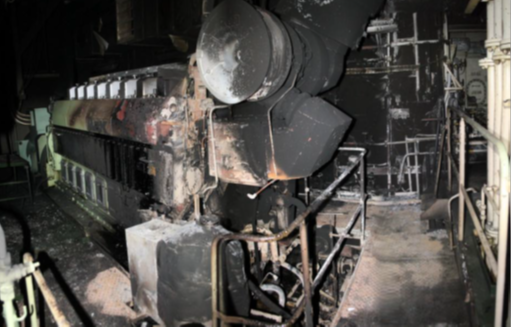
The burnt out Aux Engine
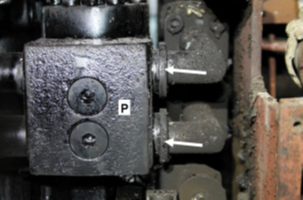
The securing bracket was missing from the fuel pump assembly
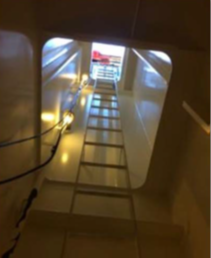
Engine room escape trunk

Hatch door (red)
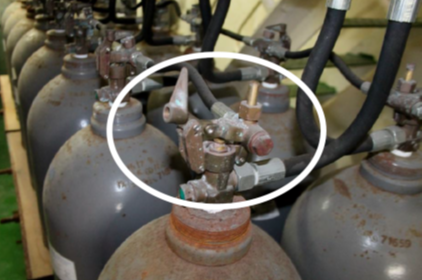
Activating head successfully deployed
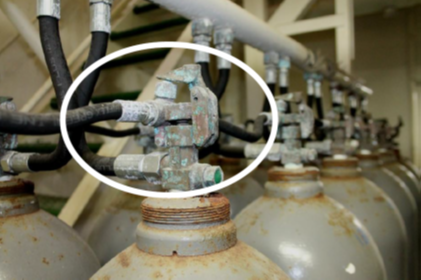
Activating head that seized
Lessons Learnt:
- Ship owners, ship managers and masters are advised to bring to the attention of the ship's crew the importance of routine checks, vigilant detection and early reporting of any faulty or malfunction of systems, equipment or appliances particularly those concerning safety, life-saving and fire-fighting, to enable prompt servicing and maintenance.
- Companies are encouraged to refer to MSC.1/Circ.1318 on Guidelines for the Maintenance and Inspections of Fixed CO2 Fire Extinguishing Systems and the Merchant Shipping (Safety Convention) Regulation. MPA has also recently issued an advisory on the maintenance and inspection of the fixed CO2 firefighting extinguishing system and engine room escape hatch door. For more information, company can refer to Shipping Circular No. 12 of 2017.